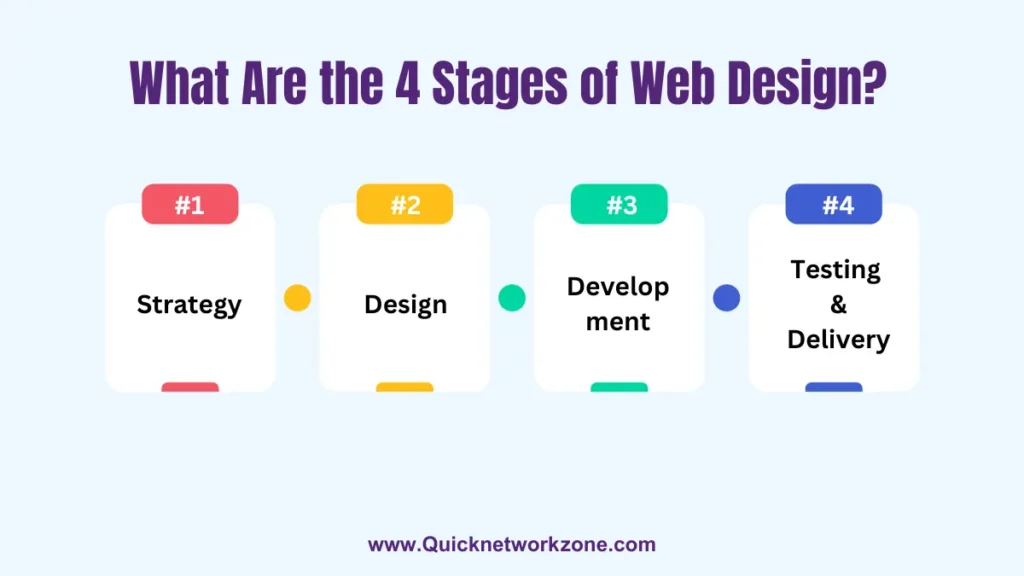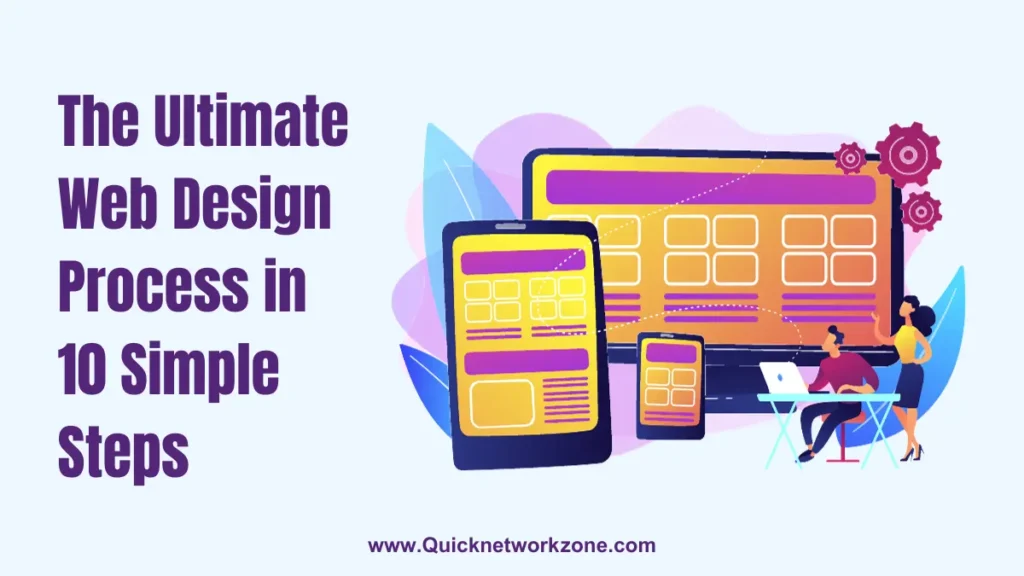You should redesign your website in 2024 if you want to keep up with the latest web design trends, optimize the user experience, boost conversions and revenue, and future-proof your online presence. Outdated site design can negatively impact visitor engagement and SEO. By improving aesthetics, navigation, speed, conversions and security – along with enhancing functionality for users – a website redesign breathes new life into your brand. Prioritizing a mobile-friendly responsive layout, fast page speeds, modern visuals and streamlined conversion paths helps you effectively connect with today’s online audiences. Rather than waiting years between full redesigns, consider incremental updates to specific pages or sections in 2024.
Key Takeaways
- Outdated website design can hurt your business and revenue growth in 2024
- A website redesign improves aesthetics, navigation, conversions, and security
- Key reasons to redesign include optimizing for mobile, improving SEO and speed, enhancing UX and branding, adding new functionality, future-proofing your site
- Consider doing incremental updates rather than waiting years between full redesigns
- Prioritize elements like page load speed, responsive layouts, clear CTAs and modern visuals
7 Reasons You Should Redesign Your Website in 2024
In today’s digital landscape, an outdated or poorly-designed website can significantly hurt your business and revenue growth. 7 Reasons You Should Redesign Your Website in 2024 With each passing year comes changes in user behavior, design trends and best practices in web development. To keep up with rising customer expectations – and avoid falling behind your competitors – redesigning your website should be a top priority for 2024.
1. Your site isn’t optimized for mobile and responsiveness
Web traffic from smartphones and tablets now accounts for over 50% of total internet usage globally. And that share is expected to grow even higher by 2024. Yet many existing websites still aren’t properly optimized for mobile devices or implementing responsive web design.
Without a mobile-friendly responsive layout, site visitors on phones and tablets will struggle with tiny text, cumbersome navigation and compatibility issues. This leads to high bounce rates and missed conversion opportunities. By 2024, having a desktop-centric site just won’t cut it anymore.
Editor’s Note: A website redesign focused on responsive web design should be a top priority for 2024. Pay attention to changes in screen size breakpoints and ensure your site reflows seamlessly on every device. Prioritizing mobile optimization improves visitor engagement and conversions across all platforms. 📱
Key Elements to Update for Mobile and Responsiveness:
- Responsive framework – Build your site on a mobile-friendly framework like Bootstrap or Foundation
- Breakpoint testing – Thoroughly test how your site displays on different devices and viewports
- Touch elements – Include buttons, input forms and CTAs optimized for touch
- Flexible images, video, grids – Media and layouts should dynamically resize/reflow
- Mobile navigation – Use an icon-based “hamburger” menu for streamlined access
By focusing on these core elements during your 2024 redesign, you can create positive user experiences that connect with audiences however they choose to visit your site.
2. Your site speed and web performance need improvement
Web performance has a direct impact on user experience, SEO and conversions. Yet over half of websites still don’t meet recommended speed benchmarks. With the average Internet connection getting faster each year, users expect lightning-fast page loads.
By 2024, having a sluggish or bloated website will likely prompt more visitors to abandon your site altogether. Those delays also hurt user experience metrics that impact search engine rankings.
Pro Tip: Aim for page speed scores above 90/100 on mobile devices to stay competitive by 2024 standards. Audit exactly where performance bottlenecks exist, then leverage caching, compression, lazy loading and code optimization to boost speeds. ⚡️
Core Areas to Address for Faster Page Speed:
- Minify code – Condense HTML, CSS, JavaScript files
- Compress images – Optimize images to reduce file size
- Browser caching – Set expires headers for faster repeat loads
- Lazy load – Only load visible content first
- Remove redirects – Eliminate unnecessary redirects
- Upgrade web host – Consider a host optimized for site performance
By optimizing your website to load faster in 2024, you can drastically cut bounce rates while improving visitor engagement and satisfaction.
3. Your SEO needs an overhaul to stay visible
SEO website design best practices evolve each year. If your site hasn’t been updated to align with the latest recommendations, your search engine visibility may start to decline by 2024.
Editor’s Note: With Google rolling out new ranking signals and page experience metrics, having an outdated website can directly hurt your positioning. A full technical SEO audit should inform your 2024 redesign priorities for maximum visibility. 🔎
Key SEO Elements to Update in a Redesign:
- Mobile optimization – As noted earlier, a mobile-friendly responsive site is mandatory
- Page speed – Faster sites outrank slower alternatives
- Keyword research – Update target keywords to match 2024 search intent
- Metadata – Refresh titles, meta descriptions, alt text, schema markup
- Internal linking – Improve site architecture and navigation flows
- Visuals – Include AI-optimized images/graphics for each page
Staying on top of SEO best practices takes continual effort. By realigning your website with the latest recommendations in 2024, you can regain lost organic traffic or further extend your visibility going forward.
4. Your user experience and branding need modernization
Even if your underlying website architecture and SEO strategies are sound, having an outdated aesthetic can still hurt conversion rates and brand perceptions by 2024. Design trends and user expectations evolve rapidly. But refreshing your website visuals can breathe new life into stale templates.
UX and Branding Elements to Modernize:
- Color schemes – Adopt current color palette trends
- Typefaces – Switch to contemporary web fonts
- Iconography – Include updated icon/glyph styling
- Photography – Use relevant 2024 stock photos
- Illustration – Vector graphics communicate clearly
- Animations – Subtle motion guides visitors
Alongside the technical site updates, redesigning the visual branding, copywriting and UX flows helps your website feel current rather than dated. This influences visitor engagement, time-on-site and overall brand impressions.
5. Your website lacks essential new functionality
The needs of your business and customers inevitably change over time. Your existing website may once have checked all the boxes for key functionality. But by 2024, failing to add relevant new features and tools can negatively impact both user experience and conversions.
New Website Functions to Consider Adding:
- Live chat – Instantly connect with browsing visitors
- User accounts – Allow customers to create/manage profiles
- Enhanced search – Improve discovery of products/content
- Interactive calculators – Provide specialized applications
- 360 imagery – Showcase goods dynamically
- AR/VR integration – Offer immersive previews
- Voice assistant compatibility – Optimize for AI commands
Don’t settle for outdated experiences that worked years ago. Take advantage of advancing web technologies and rising expectations by integrating the latest functionalities during your 2024 redesign.
6. Your current platform needs future-proofing
The underlying content management system (CMS), ecommerce platform or web development framework powering your website also has a shelf life. Legacy platforms from 5 or 10 years ago often lack capabilities to support modern site performance, design trends, integrations and security protocols.
By 2024, anchoring mission-critical systems, revenue streams and customer experiences to outdated architectures will make operating your business more challenging. Migrating to innovative new platforms future-proofs your website for years to come.
Elements to Update for Future-Proofing:
- New CMS/ecommerce system – Switch to modern option like WordPress
- Updated libraries/dependencies – Leverage latest releases
- Modular architecture – Design custom integrations
- Scalability testing – Confirm smooth growth potential
- Containerization (Docker etc) – Enhanced portability
- API expansions – Enable third-party connections
Choosing adaptive platforms and frameworks provides greater agility to respond to yet-unknown market changes. Embracing innovations like headless CMS, microservices and container orchestration sets your website up for smooth expansion rather than risky abrupt migrations down the road.
7. Ongoing incremental changes > sudden full redesigns
While the upcoming 2024 year presents a logical opportunity to overhaul your website, resist the temptation to let your online presence stagnate for years on end between refreshes. Modern web design is no longer about “big bang” launches and then walking away.
Pro Tip: Take inspiration from software development teams that use agile roadmaps and continual delivery to steadily improve products over time. Apply similar website iteration mindsets, with UX research and visitor analytics guiding regular incremental enhancements across all digital touchpoints. 📈
Benefits of Ongoing, Incremental Website Improvements:
- Cost-effective – Balance large and small investments
- Less risky – Reduce likelihood of major launch issues
- User-informed – Continual feedback and research
- Future-ready – Adapt to emerging technologies
- Competitive edge – Outpace rivals with constant site upgrades
While conducting a full website redesign every 2-3 years makes sense for most brands, significant business and revenue opportunities can be lost by exclusively clinging to those cycles. Devote 2024 as a transitional year for your website, but also lay the foundations for iterative improvements that keep experiences, capabilities and design fresh year-round.
People Also Ask About Website Redesigns
Your website is often the first touchpoint between your business and potential new customers. An outdated online presence can negatively shape brand perceptions and fail to effectively convert browsing visitors.
Here are answers to common questions around visualizing, budgeting for and ultimately prioritizing a website redesign project in 2024:
How do I know if my website really needs a redesign?
Some clear signs a site redesign should be imminent include:
- Mobile responsiveness is lacking
- Pages load slowly compared to competitors
- The UI/UX feels dated or clunky to navigate
- Visual brand identity elements need refreshing
- Core functionality improvements are sorely missing
- Traffic from organic search has declined
If your website strongly exhibits multiple symptoms from this list, the time for an overhaul is likely approaching – if not already overdue. The longer your online presence feels outdated or struggles to connect with audiences, the harder it becomes to regain lost ground.
What is a reasonable budget range for redesigning a small business website?
Typical small business website redesign costs can range from:
- $3,000 – $15,000+ for simpler informational sites
- $15,000 – $50,000+ for ecommerce sites and complex platforms
Lower-end budgets mostly cover aesthetic facelifts, while higher investments facilitate extensive new functionality. Consider both immediate user needs and future-proofing during planning, then allocate budget accordingly across:
- Project management
- Technical migration
- Visual redesign
- Copywriting
- SEO optimization
- Testing/hosting
Should I redesign my whole website at once or tackle it in phases?
The two approaches to consider are:
- Gradual, incremental redesign: Tackle higher-priority sections first while leaving other pages as-is until future phases.
- Full-site overhaul: Redesign everything with a full content migration to new platform.
Gradual phasing allows continuing use of your current site during changes, while a one-shot overhaul ensures design consistency across all pages right away. Factor in complexity, cross-dependencies, budgets and deadlines when deciding what pace makes sense.
What modern web design trends should I incorporate during a 2024 website redesign?
Some popular web design elements to integrate by 2024 include:
- Vibrant color schemes
- Flat and minimalist interfaces
- Mobile-first responsiveness
- Short-form microcopy writing
- Dynamic media and animations
- Increased personalization
- Brighter, friendlier photography
- Focus on environmental branding
- Focus on diversity, equity & inclusion (DEI)
However, avoid overly aggressive trend-chasing. Stay grounded in timeless, universal design principles while folding in contemporary aesthetics and inclusive messaging appropriate for your brand identity and target audiences.
Conclusion
Outdated website design and subpar user experiences can significantly hurt your business growth and revenue generation over time. Without continual iteration aligned to evolving customer expectations, preferences and web best practices, your online presence risks feeling irrelevant by 2024.
By proactively redesigning your website with a focus on mobile responsiveness, speed, enhanced functionality and modernized visual branding, you can effectively future-proof your site for the coming years. Treat your website as an living representation of your brand rather than a set-it-and-forget-it online brochure.
Regular UX research, visitor analytics and incremental improvements should complement periodic yet thoughtful full redesigns. Blend investment in both innovation and optimization across all digital touchpoints your customers regularly encounter and rely on.
Ultimately if aspects of your website already feel stale and ineffective at converting audiences, the time for an overhaul is likely now, not years down the road. Use 2024 as motivation to finally breathe new life into your online presence.




![Responsive Web Design: Best Practices and Considerations [3 Examples Included] Responsive Design: Best Practices and Considerations](https://quicknetworkzone.com/wp-content/uploads/2023/11/2-1024x576.webp)